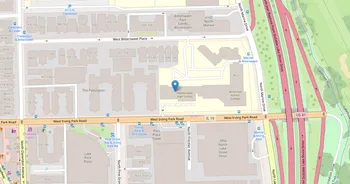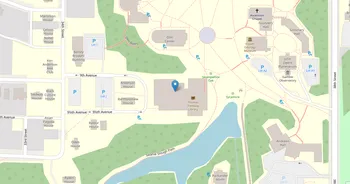American Academy of Art College : Overview, Courses, Scholarships & Rankings
About American Academy of Art College
Set in Chicago's Loop, the American Academy of Art College is known for a studio first education that leans into drawing, painting, design thinking, and visual storytelling. Courses build from fundamentals to advanced practice with steady critique, so students learn to see, refine, and present work with intention. Faculty are working artists, and the atmosphere is hands on, collaborative, and frankly pretty candid.
On campus you'll find light filled studios, digital labs, and gallery spaces where ideas get tested in public. Student services typically include advising, tutoring, and career guidance. Step outside and it's museums, riverwalk sketches, lakefront breaks, and a creative scene that opens doors to internships and freelance gigs. The culture is tight knit and focused, with sketchbooks on café tables and critiques that run a little long. The school has a reputation for watercolor and strong observational skills. Notable names with roots here include Alex Ross, Haddon Sundblom, and Thomas Blackshear II.
Key Institutional Details
Contact & Profile
Academic & Institutional
Academic Programs & Fields of Study
American Academy of Art College offers 0 degree programs across 0 major academic fields, graduating approximately 0 students annually. Explore program details, award levels, and graduate demographics below.
Tuition, Fees & Estimated Costs
Overview of tuition rates, housing, and other annual education expenses for undergraduate and graduate students
Financial Aid & Student Support
Summary of scholarships, grants, student loans, and financial aid statistics for undergraduate students
Student Success Metrics
Graduation rates and post-graduation earnings to help assess student outcomes and long-term value of education.
Loan Burden & Repayment Outcomes
Breakdown of loan repayment rates and student debt levels by income and dependency status.
Frequently Asked Questions
Find answers to the most common questions about American Academy of Art College
How much does it cost to attend American Academy of Art College?
The annual tuition at American Academy of Art College is $39,510 for in-state students. When including room and board, books, and other expenses, the total estimated cost is approximately $41,110 for in-state students. Additional costs include room and board $6,354 (off-campus) and books and supplies $1,600.
Data based on IPEDS program completions for 2022-2023 academic year. Tuition and cost estimates are approximate and may not include all fees, personal expenses, or transportation costs.
What academic programs and degree levels does American Academy of Art College offer?
American Academy of Art College offers 0 academic programs across 0 major fields of study, with available degree levels: Bachelor's.
Data based on IPEDS program completions for 2023-2024 academic year. Numbers reflect programs where students graduated, not all offered programs.
What financial aid and scholarships are available at American Academy of Art College?
American Academy of Art College provides financial aid to 25% of first-time, full-time students, with average grants of $12,000 and average loans of $15,384.
Average financial aid amounts by type:
- Pell grants: $5,101
- State/Local grants: $6,582
- Institutional grants: $2,893
- Federal loans: $5,019
The university supports 24 students with grants and 25 students with loans annually.
Data based on IPEDS for 2022-2023 academic year. Financial aid amounts and percentages may vary by program, enrollment status, and individual circumstances.
What is the average salary for American Academy of Art College graduates?
American Academy of Art College graduates earn a median salary of $25,368 after 6 years and $34,324 after 10 years.
The salary range 10 years after graduation spans from $15,996 (25th percentile) to $47,746 (75th percentile), with top earners reaching $60,000 (90th percentile).
Data based on IPEDS for 2022-2023 academic year. Salary data reflects graduates who received federal financial aid (approximately 60% of all graduates). Actual earnings may vary significantly based on program, location, and individual circumstances.
Related Universities




Found something useful? Help others discover it too! Share with friends, on social media, or save for later - every share helps someone find the information they need.